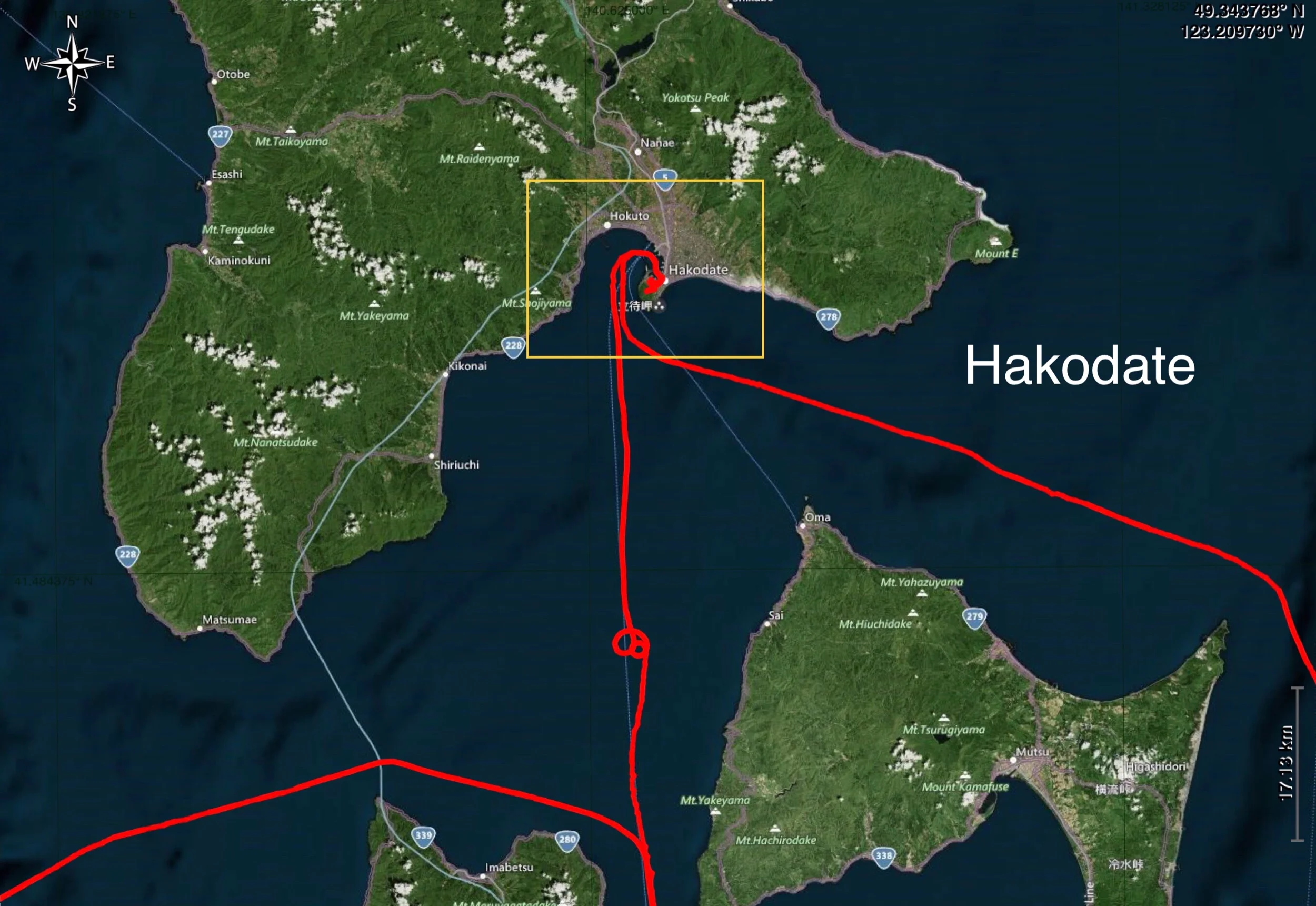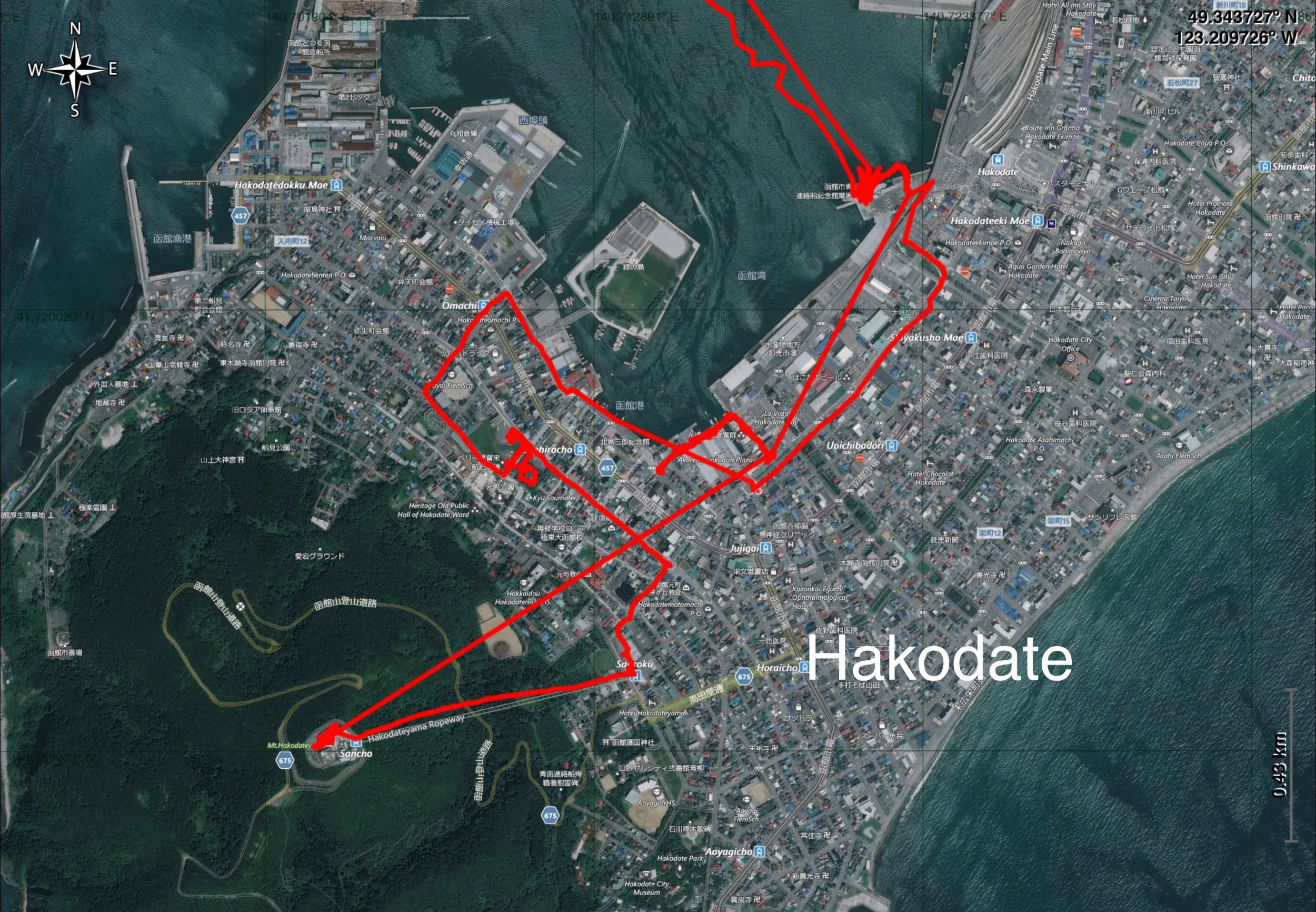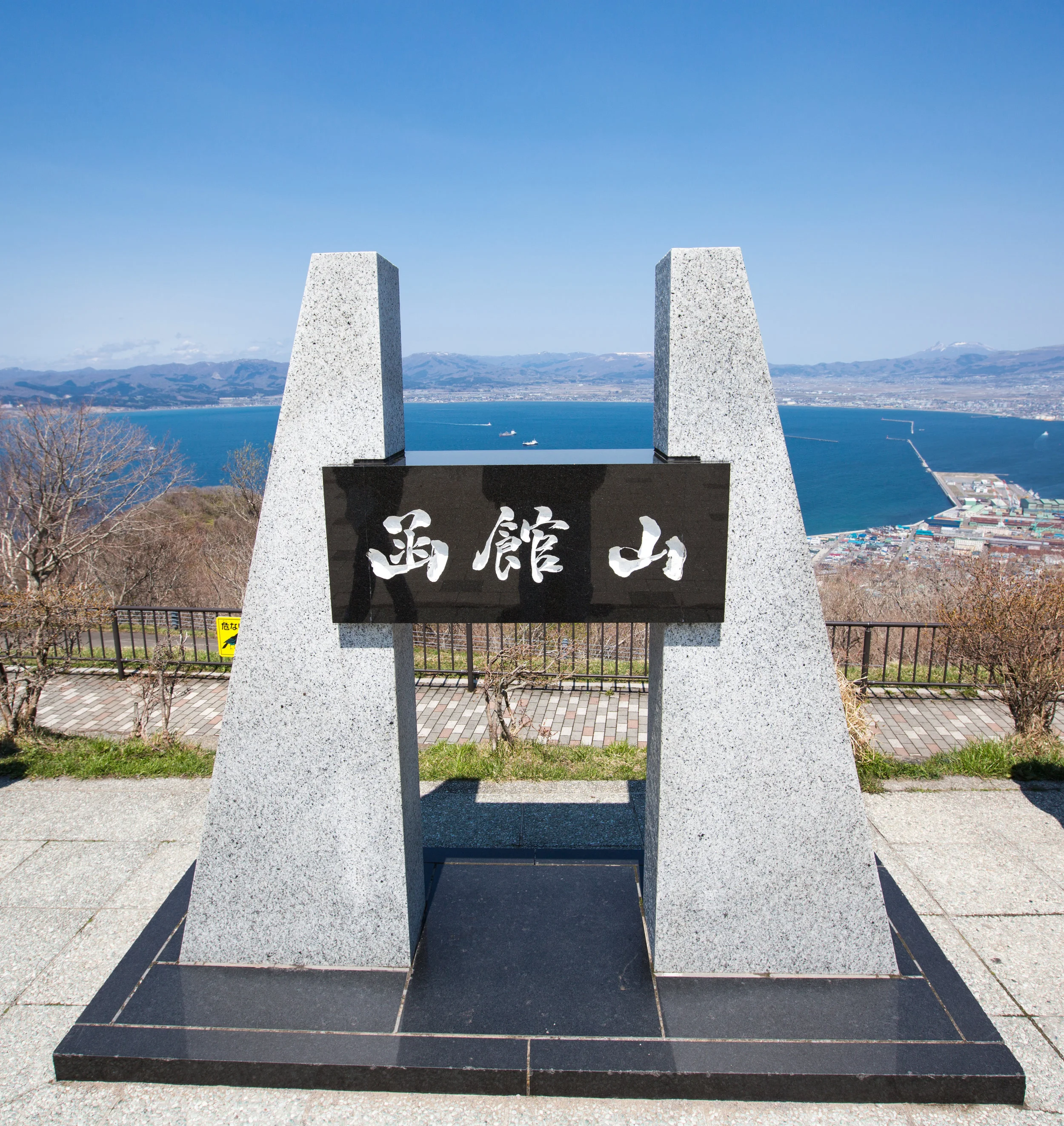Hakodate, Oshima Subprefecture
April 29, 2019
Hakodate was our first port of call after a day at sea to get there from Tokyo. Considerably colder than Tokyo at this time of year, Hakodate is located on the northern island of Hokkaido.
The day at sea was certainly worth it. Not only did we get a chance to rest up from the long flight from Vancouver to Japan, and non-stop pace in Tokyo, but it allowed Mother Nature to finally create some wonderful sunny weather.
Located in Oshima Subprefecture, Hakodate was Japan’s first city to open its port to foreign trade in 1854. It used to be Japan’s most important northern port. Although Hakodate was Hokkaido’s largest city, that all changed in 1934 when the city suffered a tremendous fire. With a current population of 280,000, it is now third in size behind Sapporo and Asahikawa.
The First of Many Shore Excursions
Our time in Hakodate began with a bus ride through town and up the hillside of Mount Hakodate. There we visited the old British Embassy before heading up the mountain on the gondola. Situated alongside a public park with a memorial to the British mariner who surveyed the harbour for possible trade, and the Japanese founders of the city, our visit to the embassy was pretty lame. Essentially, we just walked around the building on the grounds, and then entered the building only to find the entrance room had been converted into a souvenir shop. No access to the rest of the embassy building was possible. So we didn’t quite understand why this was considered a worthy tourist site. Especially when only a block away there was a magnificent temple that we only saw as we drove rapidly by it in the bus.
The Hakodate Ropeway
Our aerial tour above the cherry blossoms.
From the former British Embassy we loaded back into the bus and headed over to the access point for the Hakodate Ropeway, a large gondola that ascends Mount Hakodate.
Similar in design and size to a gondola that ascends Grouse Mountain near our home in Vancouver, this functioned mostly as a tourist novelty. Since one could drive to the top of the mountain in a fairly short period of time, it’s not like the gondola was the only manner of getting to the mountaintop. In our case, we rode up the mountain on the ropeway and came down via the bus. It had driven up the mountain after we got off at the ropeway building.
The view from atop Mount Hakodate was panoramic. The peaks across the bay are still covered with snow.
The cold and wind made us keep our hoods up.
Kanemori Red Brick District
From the mountain to the bricks.
From the top of the mountain we made our way to the ocean, and the Hakodate Bay Area. Known locally as the Kanemori Red Brick District, this now retail area, was first established in 1869 by Kamashiro Watanabe when he was 30 years old. He constructed the first warehouse business, and went on to be involved with countless other business ventures and contributed immensely to the prosperity of Hakodate. He also founded many of the social systems that were put in place to help the common folk who lived in the area. It’s likely a contributing factor why three separate towns were eventually merged into the single city that is now Hakodate.
Unfortunately, we were to discover something that would become a repeating theme throughout our voyage around Japan… that of not having enough time to fully explore the area that we were currently in. In this case it could take a minimum of two or three hours to fully enjoy exploring this neighbourhood. But we only had an hour before the excursion “officials” wanted us back on the bus to take us back to the ship. Not having enough time to properly explore made for a disappointing start to the Azamara shore excursion experience.
Leaving Hakodate around 10pm, the next stop was Aomori, the northernmost port on the main Japanese island of Honshu.


























































